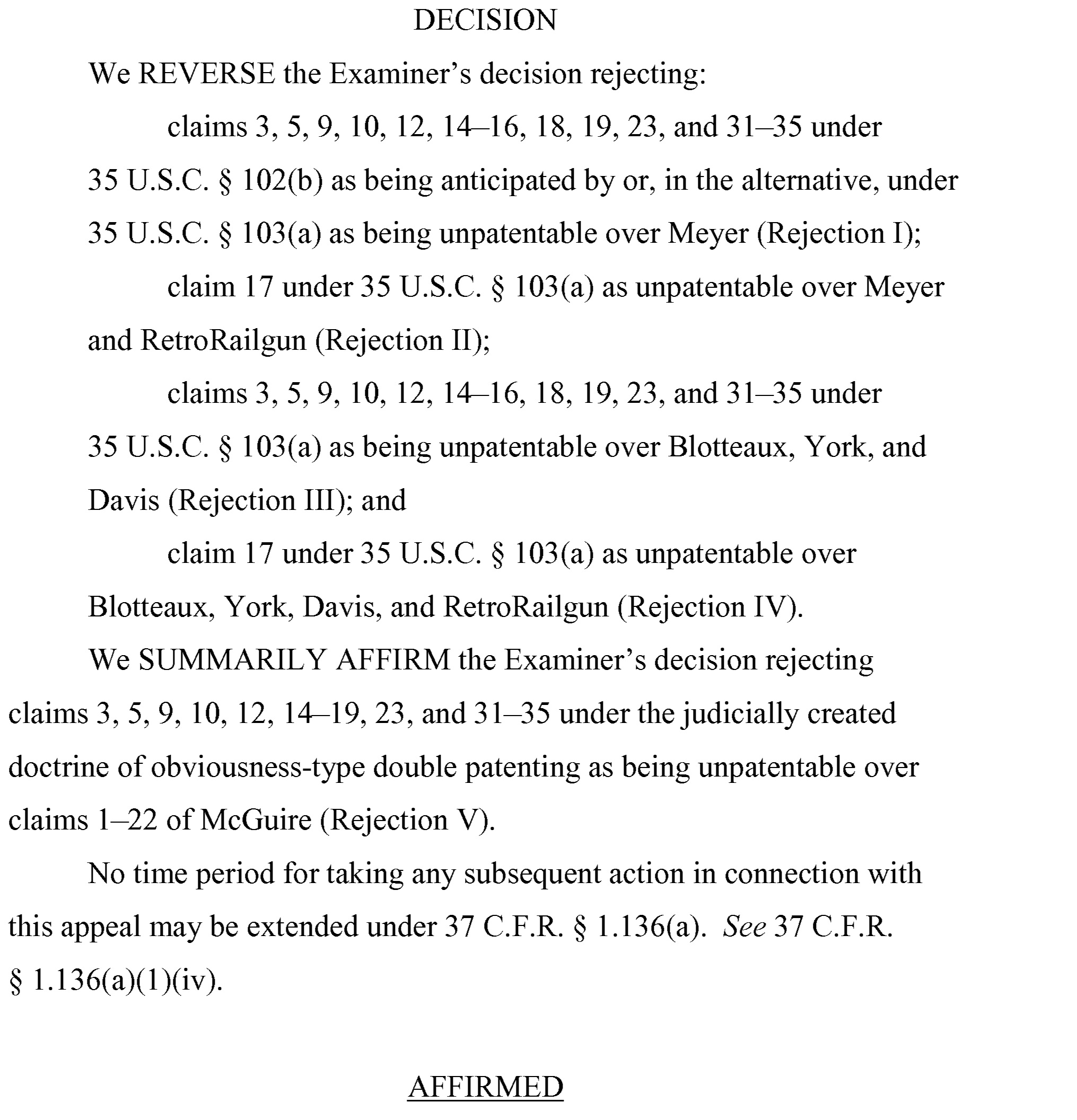Patent prosecutors are turning more an more to examiner data as a tool to aid prosecution decision. Such data can aid skilled practitioners in honing their strategy and approach. However, one must always be cautious about the data. One statistic that must be viewed carefully is the appeal win rate. The PTAB generally has three options - affirm, reverse, or affirm-in-part. The last option here is equivalent to reverse-in-part. Already these option muddy the waters somewhat because an applicant can obtain a reversal, but have a hollow victory if the Board enters a new ground of rejection. Likewise, an applicant can appear to lose (where the PTAB affirms), but essentially the applicant obtained total victory.
See, for example, SN 14/263,200. The applicant here appealed numerous prior art rejections to the PTAB, but did not appeal the double patenting rejection. Rather, as is sometimes commonly done, the applicant indicated that once allowable subject matter is obtained, a terminal disclaimer would be filed.
The PTAB decision in the file history shows “Examiner Affirmed”. So, on first glance, it looks like the applicant lost. However, reading the PTAB decision shows quite the opposite. The PTAB reversed all rejections that were appealed:
Thus, because a rejection of every appealed claim was technically sustained, the PTAB is correct to label this as “AFFIRMED.” But, in reality, if you were counting this as a data point, it would clearly be a “REVERSED” for purposes of determining whether the examiner upholds proper rejections. For another example, see SN 13/995,880.
So, like all statistics, it is important to know how they are generated in order to use them appropriately.

